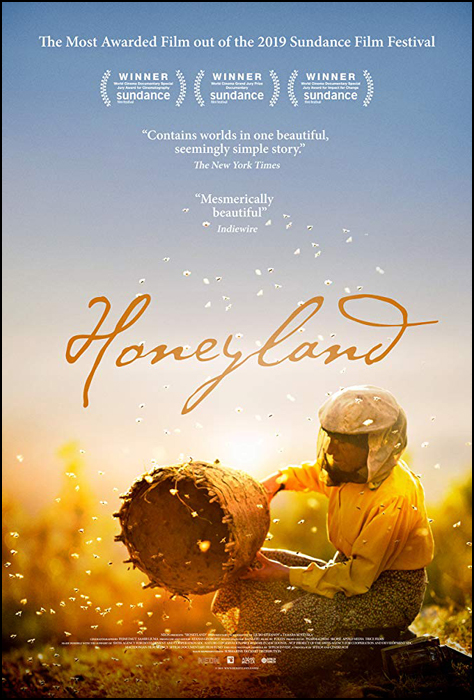As an artist who frequently works with beeswax and with a background in ecological zoology, Honeyland (2019) holds a special meaning to me. This beautiful, Oscar nominated film depicts events in the life of one of Europe’s last wild-bee keepers Hatidze Muratova.

She harvests wild honey using traditional methods. The bees need to feed during the winter when there are no sources of nectar. They store honey for this purpose. Many commercial beekeepers harvest all the honey feeding the bees with substandard substitutes like sugar solution. Hatidze’s mantra is half for the bees, half for her. Leaving half the honey for the bees that she tends to, she enables them to thrive during the winter.
Living a simple life with few of the amenities that we take for granted, Hatidze lives in harmony with nature. Honeyland shows the conflict and devastation that can be caused when people take a different attitude, in this case removing all the honey from the hives. It relates a modern version of the tragedy of the commons.
The film provides an important reminder that our world depends on the activities of such beautiful tiny animals. Bees are a vital part of crop pollination. The honeybee population is reducing. This is bad news for them, and for us. The ancient technique of harvesting wild honey may help preserve wild honeybee populations. Although sadly the film did not win an Oscar it has a vital message, one that we must not ignore .